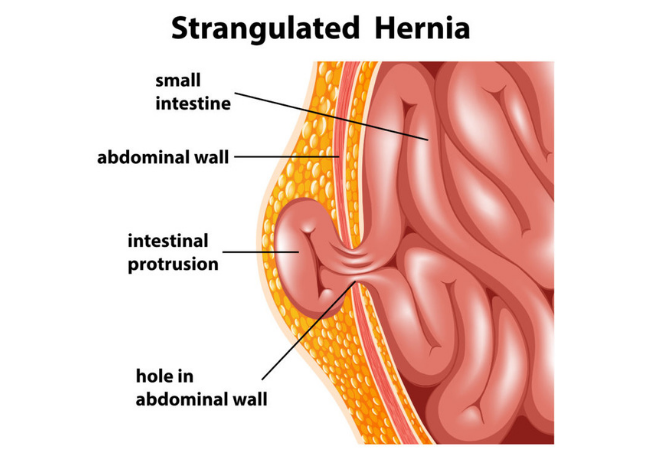
A hernia occurs when an organ or tissue pushes through a weak spot in the surrounding muscle or connective tissue. It can happen in the abdomen, groin, or belly button area.
Hernia surgery can be done using traditional open surgery or minimally invasive laparoscopic surgery, which involves small incisions and quicker recovery.
Laparoscopic hernia surgery involves smaller incisions, less pain, a shorter hospital stay, and quicker recovery time compared to open surgery.
Yes, hernia surgery is generally safe, with a high success rate. However, like any surgery, it carries some risks, which your surgeon will discuss with you beforehand.
Recovery typically takes 1-2 weeks for laparoscopic surgery and 4-6 weeks for open surgery, depending on the individual’s health and the surgery's complexity.
Though rare, hernias can recur if the surgical repair doesn’t fully heal or if a person engages in strenuous activities too soon. Following post-surgery care instructions is crucial.

Appendicitis is the inflammation of the appendix, a small organ attached to the large intestine. It can cause severe pain and requires prompt surgery (appendectomy) to remove the appendix.
Appendicitis is usually treated by removing the appendix through laparoscopic surgery, which uses small incisions, or open surgery in more severe cases.
Complications are rare but can include infection, bleeding, or injury to surrounding organs. These risks will be carefully managed by your surgeon.
Laparoscopic appendectomy typically requires 1-2 weeks of recovery, while open surgery may take longer, up to 4-6 weeks.
No, once the appendix is removed, appendicitis cannot recur.
Follow your surgeon’s post-operative care instructions, which may include limiting physical activity, taking prescribed medications, and attending follow-up appointments.

Cholecystitis is the inflammation of the gallbladder, often caused by gallstones. This can lead to severe pain and requires surgery to remove the gallbladder (cholecystectomy).
The gallbladder may need to be removed if it is inflamed, infected, or has gallstones that cause pain or complications. The surgery helps to prevent further issues.
Gallbladder removal is most commonly done through laparoscopic surgery, involving small incisions. This method offers faster recovery and less pain than open surgery.
Most people live a normal life without a gallbladder. Your liver will still produce bile to help digest food, though you may need to adjust your diet to avoid fatty foods initially.
Yes, cholecystectomy is a common and safe procedure with a low risk of complications when performed by an experienced surgeon.
Recovery usually takes 1-2 weeks for laparoscopic surgery, with a gradual return to normal activities.
We are very happy with the experience. Excellent doctor. She is very helpful and listens to the patients . Very happy with the results! Highly recommend.
I had gone for hernia repair surgery to Dr Sanjitha and the doctor was very kind and patient throughout.I have recovered fast and completely under her care ...would highly recommend.
Dr.Sanjitha was a very efficient, friendly doctor.she politely replied to all my queries.her explanation was very clear.very much satisfied with her service.
Very hospitable and soft spoken..glad to have been treated by her.
My mother was diagnosed with cellulitis and her hand was swollen and she experienced a lot of pain. Upon recommendation from our general physician, we consulted Dr. Sanjitha at Apollo Jayanagar. We had a great experience with her. At the very beginning she made my mother comfortable in the way she interacted with her. Following a very thorough examination she recommended certain exercises and medications for my mother which helped her greatly. Her swelling decreased in a week’s time and the pain has also come down significantly. Most importantly there was no surgery required. Her reassurance during this entire phase and the confidence she gave to all of us was noteworthy. Highly recommend Dr Sanjitha.
Dr. Sanjitha perfomed my surgery and treatment was done with utmost care. She explained the issue in detail to us and made us aware of the options available for treating the same. I was diagnosed with abscess with pain and feverish symptoms. She completed the surgery very professionally and took great care to ensure that there was very minor/minimal scar arising out of surgery. She personally completed every dressing session post surgery which was for about a month and very closely monitored the progress of my health and healing of the wound. I was very comfortable to approach her with my queries and seek help. I thank her for her efforts and helping me recover fast.
Click Here to View Google Map

Website Designed by HappiMed